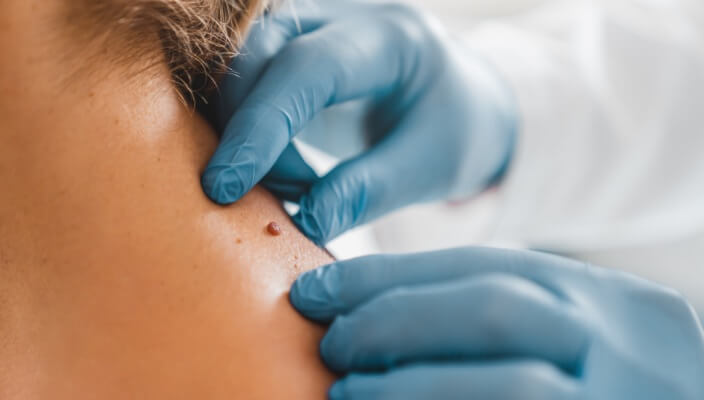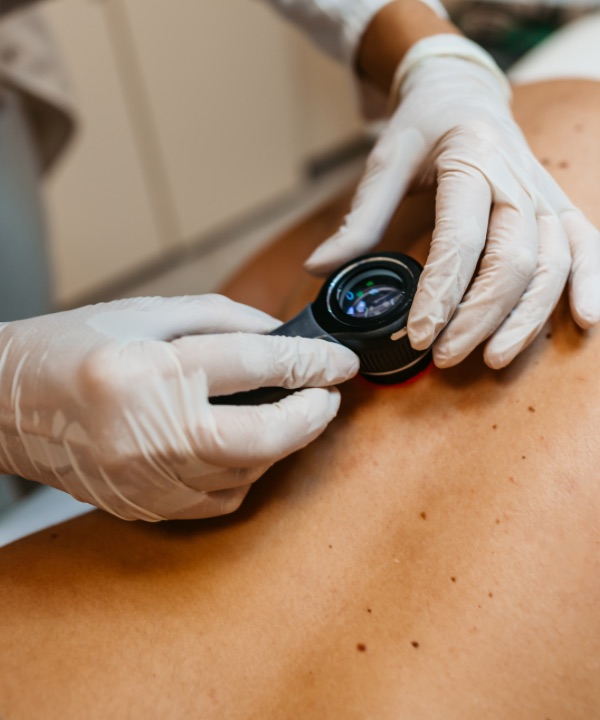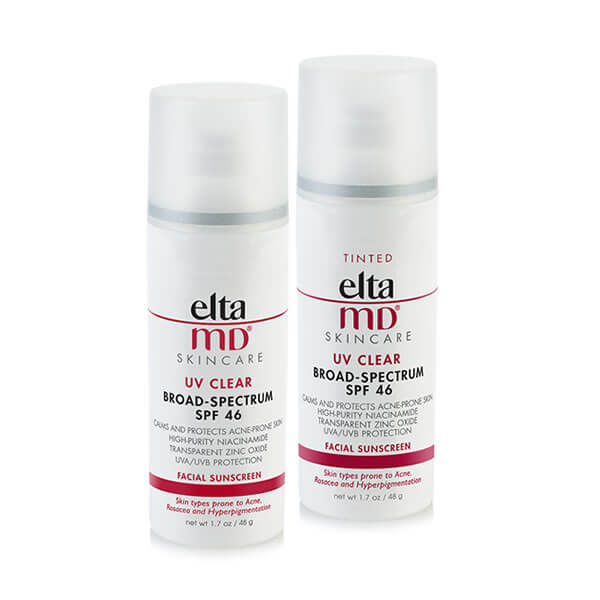Do You Know the ABCDEs of Melanoma?
Cumberland Dermatologist Explains
 Take a moment to look at your skin. Do you see any suspicious spots or abnormal looking moles? Do you know what warning signs and symptoms to be looking out for when self-examining your skin for melanoma?
Take a moment to look at your skin. Do you see any suspicious spots or abnormal looking moles? Do you know what warning signs and symptoms to be looking out for when self-examining your skin for melanoma? While this form of skin cancer is one of the rarest, it has the highest chance of spreading to other parts of the body, making it one of the most dangerous.
This is why it’s important to become more familiar with the ABCDEs of melanoma so you can better understand how this skin cancer, as well as other types, show up on the skin. Learn more by reading our dermatologists’ guide below.
What is the Melanoma ABCDE Rule?
In dermatology, many organizations and providers, including the The Skin Cancer Foundation and American Academy of Dermatology, use the “ABCDE rule” when looking for signs of skin cancer. This rule helps individuals, like you and me, better remember common characteristics of melanoma by thinking about them alphabetically.
“ABCDE” stands for asymmetry, border, color, diameter, and evolving, which are all characteristics you should look out for in moles and spots when examining your skin.
ABCDE of Melanoma Cancer
A is for Asymmetry — If you draw a line through the middle of the mole or spot on your skin, do the halves line up?
B is for Border — Are the borders of the mole or spot irregular, scalloped, or hard to define?
C is for Color — Is the color of the mole or spot inconsistent, with shades of tan, brown, red, black, dark brown, or blue?
D is for Diameter — How large is the mole? Melanomas are typically larger than 6mm (the size of a pencil eraser).
E is for Evolving — Has the mole or spot changed overtime, such as becoming larger or changing color? Keep an eye out for a mole or skin growth that looks different from others on your body or changes in appearance over time.
These are all characteristics, warning signs, and symptoms our board-certified dermatologists look for when diagnosing and classifying melanomas.
Furthermore, the ABCDEs of melanoma help you to identify “Ugly Duckling” moles and spots. This skin cancer identification tip is based on the thought that moles on the body look similar to one another, while melanoma moles appear peculiar or stand out from those around them.
Only twenty to thirty percent of melanomas start from a mole, while the other seventy to eighty percent begin on “normal-looking” skin.
Understanding the Dangerous of Melanoma
In addition to the melanoma ABCDEs, there are a few other warning signs and symptoms you should be aware of. This includes:
- A sore that won’t heal, or that heals and comes back.
- Redness or swelling around a mole or spot.
- Change in sensation in or around a mole, such as itching, tenderness, or pain.
- Changes to the surface of a mole or spot, such as scaling, oozing, or bleeding.
As you learn more about how to identify melanomas with the ABCDE skin cancer guide, it’s important to understand that the majority of melanomas do not begin in a mole.
In fact, only twenty to thirty percent of melanomas start from a mole, while the other seventy to eighty percent begin on “normal-looking” skin. This is why it’s crucial to examine your skin for any new or changing spots and not just moles.

Schedule Your Skin Cancer Screening at Cumberland Skin
When it comes to melanoma skin cancer, early detection is key to a successful melanoma treatment! If you notice a change in your skin, we urge you to visit one of our board-certified dermatologists for a professional skin cancer screening. Contact us to schedule your appointment!
Featured Sunscreens

Bright+Block SPF 44 Tinted Mineral Sunscreen for Face
Bright+Block SPF 44 tinted mineral sunscreen is water-resistant (40 minutes) and provides a lightweight, sheer universal tint that flatters most skin tones. This sunscreen is suitable for dry, normal or sensitive skin and is light enough to wear alone or under makeup for daily sun protection. Broad-spectrum UVA & UVB coverage is achieved through chemical-free active ingredients: Zinc oxide and Titanium Dioxide.

EltaMD UV Clear SPF 46 original
Oil-free EltaMD UV Clear helps calm and protect sensitive skin types prone to discoloration and breakouts associated to acne and rosacea. It contains niacinamide (vitamin B3), hyaluronic acid and lactic acid, ingredients that promote the appearance of healthy-looking skin. Very lightweight and silky, it may be worn with makeup or alone. Choose from tinted and untinted formulas for use every day.
Related Blog Posts

- Skin Cancer
- General Dermatology
- Skin Exams
- Sun Safety
If your dermatologist finds a suspicious mole during your TBSE, hey want to perform a skin biopsy.
Read More
- Skin Cancer
- Sun Safety
Summer safety is more than just putting on sunscreen; many other factors to consider when keeping yourself and your children safe from damage and potential skin cancer.

- Skin Cancer
- Skin Exams
It’s time to face the facts: skin cancer can develop in individuals of all skin colors, including those with darker skin tones.
Read More


